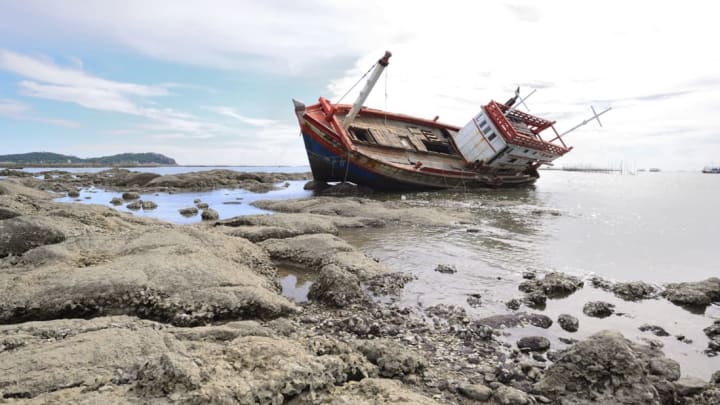Along with serving as the names of two villainous eels in Disney's animated classic The Little Mermaid, the phrase “flotsam and jetsam” is often used to describe the floating debris found in the aftermath of an accident at sea. And while it might initially seem like a strange moniker for maritime wreckage, there's a very good reason for the two-part terminology.
According to maritime law, “jetsam” is the term for anything that is cast overboard or otherwise jettisoned from a distressed ship intentionally, either to lighten the cargo load or as some other reaction to a problem the vessel has encountered. The term can be used to describe anything that finds its way off the ship in this fashion and is discovered floating in the water or washed ashore.
“Flotsam,” on the other hand, is defined as the debris that is unintentionally left behind after a shipwreck, which can include portions of the ship itself, as well as cargo or other items that float to the surface after a ship sinks. (For example, that splintered panel of ornately carved wood that Rose is floating on at the end of Titanic would be considered flotsam—but that certainly didn't help poor Jack.)
Maritime law distinguishes flotsam from jetsam by the presence of intent to remove material from the ship: Basically, if it ended up in the water on purpose, it's jetsam. Everything else floating around the site of the incident is flotsam. This is an important distinction, as some countries have very particular guidelines for how each type of debris should be handled—and who takes ownership of it—that are determined by the category of debris. Laws in the UK once dictated that recovered jetsam be returned to the owner of the vessel, while flotsam became the property of the government.
However, it's worth noting that both of these terms only apply to debris that's floating in the water. Anything that sinks to the bottom of the ocean falls under a new set of terms: “lagan” and “derelict.” And just like with flotsam and jetsam, the difference between the terms depends on how the material got there. Cargo that is left behind intentionally—usually with a buoy attached—in order to be recovered at a later point is called “lagan,” while anything that sinks to the bottom of the ocean without any plans for recovery is described as “derelict.”
Today, all four categories of debris—flotsam, jetsam, lagan, and derelict—are generally grouped together in most countries' maritime laws. However, according to the United Kingdom's Merchant Shipping Act of 1995, flotsam, jetsam, and lagan remain the property of their original owners when discovered by rescuers or salvage agents, but derelict falls under an entirely different and comprehensive set of regulations.
